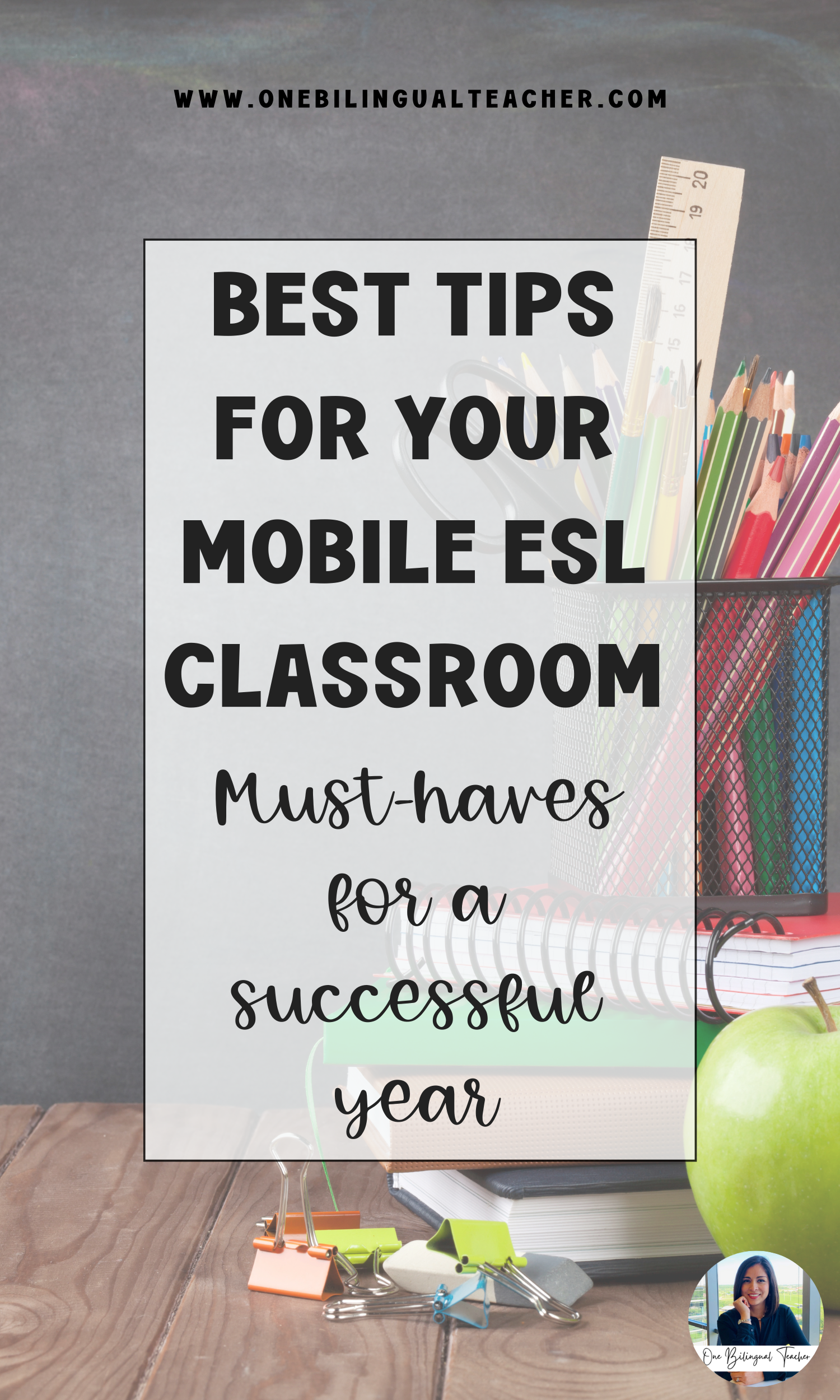Best Tips for Your Mobile ESL Classroom: Stay Organized and Effective
We’re all feeling the overcrowding of schools, aren’t we? If you’re like me, rolling a cart from classroom to classroom teaching ESL classes, you know it can get a little overwhelming. Today, I want to share my experience from the past three years and how I’ve managed to do it all from one teaching cart.
Moving around can be a challenge, but don’t worry! Here, I’ll show you some practical tips and suggest valuable resources to help you optimize your teaching cart, making your work life easier and your teaching more effective.
Tip 1: Go Digital
One of the best ways to lighten your load is to go digital as much as you can. Take advantage of your school’s Chromebooks and assign most of your work in digital formats. Not only does it save time at the copier, but it also keeps you from hauling a ton of papers all over the school. Plus, digital assignments are easy to track and provide feedback on. You can find plenty of digital resources in my TPT store.
Tip 2: Choose the Right Cart
Finding the right teaching cart is key to your success. For two years, I used a cart that could haul 30-ish headphones for listening and speaking practice. The extra pockets were perfect for supplies like pencils and passes. This year, I’ve switched to a three-tiered cart that’s a better fit for my smaller classes. Look for a cart that offers ample storage without taking up too much room—trust me, it makes all the difference!
Tip 3: Must-Have Supplies for Your Cart
Here’s a list of must-have supplies that I’ve found helpful to keep in my teaching cart:
Headphones: Essential for listening activities. Keep a few pairs handy for students to use during audio practice.
Document Camera: A portable document camera serves as a projector for worksheets and student work.
Pencils: Keep a stock of pencils in a holder so students always have access to one.
Cup Holder: A small detail that makes a big difference when you’re carrying your morning coffee!
Disinfectant Wipes: Keep your cart clean and ready, especially when moving between rooms.
Tissue Boxes: Tissues are a classroom essential. Having tissue boxes on your cart ensures that students can quickly address any sneezes or spills. Again, some teachers have them in their classrooms, but…
Tip 4: Stay Organized for Maximum Efficiency
An organized cart is a game-changer. Here are some strategies to keep your cart clutter-free and efficient:
File Organizer: Keep a simple file organizer for student work, notebook paper, and scratch paper.
Assign Specific Shelves: Dedicate each shelf of your cart to a specific type of supply. This makes finding what you need a breeze.
Use Containers or Dividers: Prevent items from shifting as you move by using small containers or dividers.
Tip 4: Maximize Your Teaching Resources
Also depending on what you’re teaching at the moment, you may need to include other items in your cart.
Flashcards: Great for teaching vocabulary and grammar concepts.
Small Whiteboards and Markers: Perfect for interactive activities like quick grammar practice.
Reading Materials: Keep a few storybooks or novels for different reading levels.
Magnetic Hooks: Attach these to your cart for extra storage options like passes or headphones.
In a Nutshell
Your teaching cart isn’t just a means of transporting supplies; it’s your mobile ESL classroom on wheels! By following these tips and exploring the suggested resources, you’ll create an organized, engaging, and efficient teaching environment no matter where you go. Whether you’re a seasoned cart-rolling pro or just starting out, these strategies will help you make the most of your mobile classroom setup.
Looking for more tips? Explore my ESL Teacher Membership for ready-made resources that will save you time and make your mobile teaching even more effective.
This blog post may contain affiliate links, which means that if you click on one of the links and make a purchase, I may earn a small commission at no additional cost to you. This commission helps support the maintenance and upkeep of this blog and allows me to continue providing valuable content to my readers. Please rest assured that I only recommend products, resources, and services that I personally believe in and have found to be helpful.





